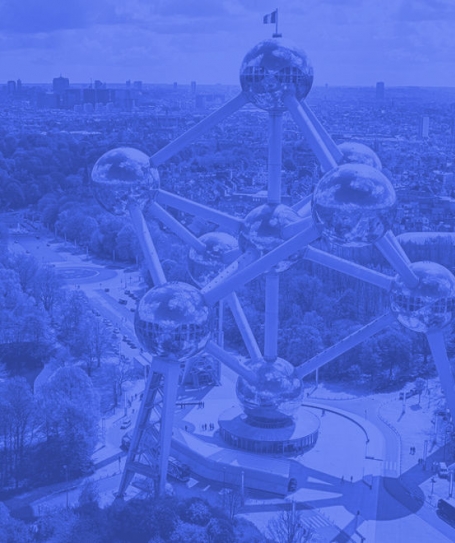"Challenges" Series Introduction
Those of our readers who have been reading Boss News for a number of years may be aware that our Business Leader Interview series has been running for over a decade now. These interviews have always been well received by our readers and have stimulated significant comment in our wider travels and meetings throughout the Information Management sector.
Our aim in publishing such interviews has always been to inform about the depth and diversity of the information Management sector as well as ensuring an overview of latest technology innovations. To this end, we have continued to select a wide variety of senior executives from an equally broad selection of sub-niches. This approach has generated a steady and rich stream of information about how business is conducted and innovation fostered across the plethora of segments that form the Information Management/ECM sector.
Building on this success, we have now created an additional interview series - the “Challenges series” - which will approach the subject matter from a slightly different perspective, addressing the subject of the “challenges” encountered, tackled and overcome by a selection of the very top executives in the Information Management niche. The topic is deliberately broad, encompassing both personal and/or business challenges and, we feel, will make for illuminating reading, focusing, as it will, on how the individual executive has confronted and conquered their specific challenges, harnessing their own skillset towards a positive outcome.
In the latest “Challenges” interview we talk with Alan Trefler, Founder & CEO at Pegasystems. We are delighted to feature Alan in Boss News and to learn more about his journey and its challenges.
BN: Welcome to Boss News, Alan. Could you start by tell us a little of your background and how you came to found Pegasystems at the relatively young age of 27?
AT: I grew up in an entrepreneurial family. My father came to America after surviving World War II and started Trefler’s Antique Restoring Studio, which is still running today. I worked in the family business, and that’s where I got my first taste of what it took to run a business. From that experience I learned what it took to be in a service business, the importance of quality in your work, and what it’s like to bootstrap something and stick with it through good times and bad. Though I didn’t know it at the time, the seeds of entrepreneurship were firmly planted.
I went on to study engineering in college and I was also an avid chess player. I became involved in trying to teach computers how to play chess. We were able to get them to play reasonably well, and that was my first introduction to building intelligent software applications.
My first job out of school was creating large software systems for financial services companies. We went through a process I found to be extremely arduous. Clients wrote long, complicated specs; my team would then translate into complex diagrams and then into arcane computer code. I was shocked by how primitive the approach was. As computers were getting faster and smarter, we were still using the same obscure languages that business people couldn’t understand. Rather than teach people how to understand computer speak, I thought we should focus on teaching computers how to understand the language of business.
So, I started Pega in 1983 with a vision of creating a visual language that would allow business people to tell computers what they wanted to do and have the computer create the software, all while bringing in expert system principles to optimize customer experience and business operations. And that is fundamentally at the heart of what we continue to do today.
BN: How has the journey in growing Pegasystems to its current size, impacted you personally?
AT: First, let me say that I absolutely love what I do. I feel extremely fortunate to have found a career that has held my passion for more than 30 years. It allows me to continue to learn and grow, provides opportunities for an expanding number of staff around the world, and lets me give back to the community in a meaningful way.
I thrive on learning and mastering new skills, so when Pega was smaller, I was able to be involved in many aspects of the company and spent time learning about the disciplines and functions I didn’t know about. At 3,700 global employees, the company is radically different from what it was when we started. I still make sure to find time to check in where needed and still enjoy dipping into areas I want to learn more about. But today there are substantially more opportunities to learn from the incredible talent we’ve brought in that is helping us continuously evolve the company to leverage new technologies and customer segments.
The skills you need to run a start-up are not the same skills required to run a large, global public company. I’ve spent a lot of time thinking about which skills I need to keep sharp, which I need to improve, and which I need to de-emphasize. I’ve been active in soliciting feedback from my peers and reports and have engaged a professional coach to ensure I keep growing and learning. If the best athletes in the world have coaches, why shouldn’t business people? I’ve also focused on being a better listener and learning how to manage my natural tendency to have very strong and vocal opinions to ensure I’m not drowning out other perspectives. I’ve found all these skills are useful not just in business but in life overall.
BN: Could you describe one of what you perceive to be your biggest mistake in business and what have you learned from it?
AT: I think we went public before we had the right scale and maturity – our twelve month trailing revenue was $32M, which left us very vulnerable to any number of factors. Long term, it was the right strategy and today we’re a very strong public company. However, in the short term, it put additional pressure on the organization that was more disruptive than I realized it would be. I brought in someone to run the company for a while to help the company learn how to operate at scale and focused a lot of my attention on product strategy and development. After I was satisfied that we were back on track and I had learned what I needed to about running the business, I went back to the CEO role. From that experience, I learned the importance of staying focused on what matters, keeping your eye on the long term goal, and being thoughtful about getting to where you want to go.
BN: In today’s climate, where business leaders need access to all the data insights available in their organisations, how do your solutions help your customers avoid the “death by data” you refer to in your book, “Build for Change”?
AT: Many companies rely too much on data alone which, in effect, is the equivalent of memory. It tells you what your customers did in the past but isn’t an accurate predictor of the future. It’s like assuming because a stock did well historically it will automatically repeat that performance in the future – and anyone who’s invested in the stock market understands the flaw in that assumption.
Likewise, data in and of itself does not guarantee good judgement. You need to combine memory with intent to put it in context. Intent represents the goals, desires, needs and preferences of customers. If data is memory, intent is the combination of desire moderated by judgement. When you combine judgement and desire with memory, you move beyond knowledge of the past into a powerful model for understanding both the present and future. In the simplest terms, this is what our software helps our clients do. It allows them to turn information into insight and insight into action.
BN: You stated in an interview with Forbes that it was your mission to relieve organisations of some of the “heavy lifting” they had to undertake in their business processes. You also stated in the same interview, that “it turns out to be a fairly hard problem to solve.” Is it still proving a challenge?
AT: It is a hard problem to solve, but one we’ve been working on and helping our customers with for more than 30 years. It’s a key reason some of the world’s best brands turn to us for help and achieve some remarkable results. The fact that it’s hard to do allows us to be highly differentiated from our competitors.
At the foundation of all our software is an approach that uses metaphors or models to describe the problem a company is trying to solve or the process they are trying to automate. This allows business and IT people to work more closely together to outline what they are trying to achieve in a way they can both understand. Once the model is created, our software generates the code. If you need to change something you change the model, not the code. This makes it much easier to adapt as your business, the industry or your customers’ needs change.
BN: Also in your book, “Build for Change”, you refer to the fact that organisations are using three types of technology - zombie, manual and rogue systems. Can you elaborate a little on these terms?
AT: I used these terms to describe the types of technology problems that traditional application development approaches create.
Zombie systems are ones that stagnate when business people need changes to optimize the customer experience but can’t get the changes made. These systems are an epidemic in the business world. Without the ability to change these systems, they stagnate and become out of date and ineffective.
Manual systems are efforts to work around stagnant zombie or missing systems. It’s common to try to fix a stagnant system by adding a manual system or workaround. The problem is they lack automation, are often not effectively unified into existing systems, and rely heavily on people to remember and implement the right business rules, procedures and calculations. They are more likely to leave out important safeguards and controls and are more subject to mistakes and intentional gaming of the system.
Rogue systems result from frustrated business people that create well-intentioned but poorly conceived stopgaps to address their needs. They may end up building huge portfolios of makeshift applications and systems that are completely unsustainable and don’t integrate with their core business systems. So, in trying to solve a very real problem, they often make it worse.
The answer to all of these problems is applications that are easier to maintain and change - and that’s what we’ve designed our software to do.
BN: Could you outline some of the challenges you have encountered over the years in leading Pegasystems? – And how you have managed to resolve them?
AT: Most of the challenges I’ve encountered in leading Pega have been around growth - either adjusting to growth or looking to accelerate growth. For both, I follow a general set of guidelines:
- Get laser focused on what’s important.
- Be direct and honest about challenges, but don’t create panic.
- Make sure everyone knows the challenge is a company issue, not a sales, marketing, engineering, etc. issue. Everyone has a role to play and something they can contribute.
- Solicit ideas and feedback and ensure there is transparency around decisions.
BN: You have traditionally sold to the larger conglomerates and Fortune 500 companies. Do you now have a strategy for rolling out your solutions to smaller enterprises?
AT: We have expanded our target base to the Global 3000, though we do have some clients that are smaller than that. Customers that turn to us are those that want to leverage customer engagement as a major differentiator and competitive advantage.
BN: What do you think are the characteristics that make a good leader? - And, do you have a role model in that respect?
AT: I think good leaders have a few common characteristics:
- They have a genuine passion for what they do and the ability to leverage that passion to motivate others
- They have a mission, the persistence to see it through and the ability to recognize when it’s time to change course
- They surround themselves with people who know things they don’t and encourage everyone to have an informed opinion
There are a lot of people I draw inspiration from for different reasons. Two in particular, who I think are powerful role models are Malala Yousifazi, the young woman who survived an assassination attempt and who has already spent the majority of her life advocating for young women’s rights and education under an oppressive system; and Sal Kahn, the former hedge fund analyst who left the financial world to found the Khan Academy, a not-for-profit with a mission of providing a free, world-class education for anyone, anywhere. I’ve had the privilege of meeting both in person and what they have in common is an infectious passion, a dedication to changing the world in a fundamentally positive way, and a belief in and commitment to using education to make things better. I am moved by Malala’s courage and ability to inspire a global movement and by Sal’s use of technology to innovate and empower education.
BN: We know you have said that your customers can be assured Pegasystems will never be acquired by an Oracle or IBM as you’d “rather eat sand”; what plans do you have for future growth and how do you plan to achieve them?
AT: Growing a public business today is fraught with lots of complicated and sometimes competing influences. But our plan for growth continues in a fundamental way to be quite simple - Create solutions that the world’s best companies need, to turn customer engagement into a competitive advantage, help our clients evolve as their business and customers do, and stay focused on delivering the outcomes our clients care most about. Over the last 10 years, we’ve grown approximately 20 percent CAGR, so I feel pretty confident in our ability to grow.
BN: You are well known for your table tennis skills and were World Open Chess Champion in 1975. Do you still play chess and table tennis often – and do you find them to be great stress relievers?
AT: I still love to play both. I’m not a particularly high-stress person but I do find they help me hone different but related skills I use in my business every day.
Chess is more about long term strategy - thinking not just about the next move but about four or five moves ahead. I don’t play as much as I used to, but for the last several years, we’ve run a match at our annual conference where I play up to 20 people simultaneously. I’ve enjoyed some really competitive games and had a lot of fun. It’s an intense few hours, but during that time, I’m completely focused on what I’m doing and not distracted by any other concerns.
Ping Pong is a newer game for me and I play more regularly – In fact, I take lessons several times a month. Most people don’t realize that it’s actually a pretty physical game, so it’s great exercise. Like chess, it does require you to plan ahead and predict your opponent’s moves, but it’s much faster. It requires agility, as well as the ability to react and change course quickly. At our annual user conference, we almost always have a few ping pong tables that come out late at night, and you can generally find people playing into the wee hours of the morning.







